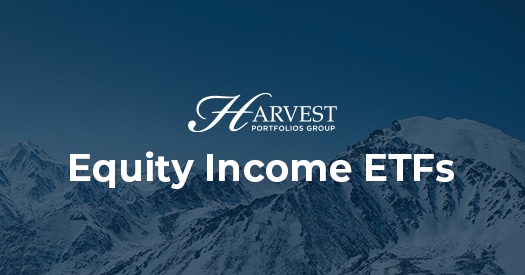By Harvest ETFs
Retirement concepts and goals have undergone an evolution in the 21st century. The 20th century saw the rapid growth of the middle class after World War II. This structured model lent itself to a basic retirement formula, wherein the bulk workers were able to rely on defined-benefit plans that they paid into a guaranteed a comfortable retirement after the age of 65.
Millennials have been confronted with a rapidly changing economic landscape. The rise of precarious work and the proliferation of contractors has shifted retirement goals. Millennials must prioritize a retirement strategy to effectively prepare for the future.
1. Diversifying Retirement Income Sources
Diversification is the cornerstone of a resilient financial plan. For millennials, establishing diverse streams of retirement income is crucial to ensuring a stable, stress-free post-work life. Gone are the days when one could rely solely on a single pension plan or government-backed program to cover post-retirement expenses. Today’s rapidly changing financial landscape calls for a more holistic approach to saving and investing.
Alternative investment solutions encompass a broad range of assets, from real estate to commodities, and can be an excellent way to hedge against market volatility. One promising option is Exchange Traded Funds or ETFs. These funds, which bundle various assets like stocks, bonds, or commodities, offer investors a chance to diversify their portfolio without the need to pick and manage individual assets.
Here’s where Harvest ETFs shine. Offering a diverse array of ETF options, Harvest Portfolios facilitates easy access to sectors and industries that may otherwise be challenging for individual investors by allowing investors to gain exposure to these sectors and industries at a more affordable price. By incorporating Harvest ETFs into their retirement strategy, millennials can benefit from both the growth potential of varied assets and the convenience of managed funds. This dual advantage makes ETFs a compelling choice for those looking to diversify their retirement income sources beyond traditional avenues.
2. Understanding RRSPs, RRIFs and CPP
Registered Retirement Savings Plan (RRSP) accounts are a key tool Canadians can use to save for retirement. Their mechanism is simple: contributions to these accounts within the annual limit are tax-deductible. Income earned by investments held in the RRSP is also tax exempt, so long as that income remains in the account. RRSPs give you an annual tax incentive to save for your retirement.
When RRSP holders turn 71, however, those RRSPs turn into Registered Retirement Income Funds (RRIFs). These accounts are subject to a government-mandated minimum withdrawal, on which some of the deferred tax from these contributions is paid. You can learn more about the problems with RRIF withdrawals, and how to navigate them here.
Canadians between the ages of 60 and 70 who worked in Canada and contributed to the Canada Pension Plan (CPP) can elect to activate their CPP benefits. Those benefits will be paid as monthly income based on how much you earned and contributed during your working years, as well as the age you chose to begin receiving benefits.
The longer you wait before turning 70, the higher your CPP benefits will be, though that appreciation doesn’t go beyond age 70. Millennials planning for retirement at any age could consider how they’ll finance their lifestyles while maximizing their CPP benefits at age 70.
3. Equity Income ETFs
One of the issues that retirees have struggled with over the past decade has been the extremely low yields of traditional fixed income products like bonds. In 2022 those rates rose somewhat, but only following record inflation eating away at the ‘real yields’ of an income investment.
Many equity income ETFs pay annualized yields higher than most fixed income and higher than the rate of inflation. These ETFs hold portfolios of equities—stocks—but pay distributions that are generated through a combination of dividends and other strategies. Harvest equity income ETFs use an active and flexible covered call option writing strategy to help generate their monthly cash distributions.
These ETFs still participate in some of the market growth opportunities a portfolio of stocks would, while also delivering consistent monthly cash flow for unitholders. The income they pay can help retirees finance their lifestyle goals and help millennials as they prepare themselves to retire.
4. DRIP Investing and Compound Savings
While equity income ETFs have advantages for those who would draw on their income yields to cover their expenses, they have an additional benefit for investors with a different time horizon. Through the Harvest Distribution Reinvestment Program (DRIP) the distributions paid monthly to unitholders from an ETF could be reinvested in that same ETF. DRIP investments incur no additional trading charges once approved by your brokerage and allow your investments to compound year over year. For millennials who have a few decades until they hit retirement, DRIP can be a useful ‘set it and forget it’ tool that results in a significant holding of an equity income ETF by the time retirement comes.
You can learn more about the benefits of compounding via DRIP here.
5. Factoring in Lifestyle Choices and Goals
When it comes to retirement planning, financial charts, graphs, and numbers are only part of the equation. For millennials, who’ve grown up in an era of unprecedented choices and possibilities, personal goals and lifestyle choices play a pivotal role in shaping their vision of retirement.
Travel, for instance, has emerged as a significant aspiration. Many millennials dream of exploring the world, experiencing diverse cultures, or even living as digital nomads in multiple countries. These aren’t just fleeting desires; they’re integral to their life’s blueprint. Preparing for such a lifestyle requires not only saving for daily post-retirement expenses but also setting aside a travel fund that allows for adventures without depleting core savings.
Home ownership, another key milestone for previous generations, has taken on a different hue for millennials. With skyrocketing real estate prices in many urban areas, some choose to rent, investing their savings elsewhere, while others prioritize buying property, seeing it as a tangible asset and a long-term investment. This decision significantly impacts retirement savings strategies and the allocation of financial resources.
Balancing present-day desires with future security is the crux of the millennial retirement challenge. It’s not just about ensuring there’s enough to survive. Indeed, it is about ensuring there’s enough to thrive. Every decision, from attending concerts and festivals, to pursuing higher education or starting a family has financial implications. By recognizing and respecting their unique life goals, millennials can tailor their retirement strategies to fit their personal narratives ensuring they don’t just survive their golden years, but truly thrive.
Harvest ETFs: A Potential Solution for Diverse Needs
Navigating the myriad of investment options can be overwhelming, especially for those just starting their financial journey. As millennials grapple with the complexities of modern-day economics, the need for flexible, diverse, and efficient investment solutions is evident. This is where Harvest ETFs can help.
Harvest Portfolios has curated a selection of ETFs that cater to a variety of financial objectives. Whether you’re a millennial looking to invest in high-growth sectors, seeking consistent income, or aiming for a balanced approach that straddles both, there’s an ETF at Harvest designed to help meet your needs. These ETFs encompass different asset classes, sectors, and even geographical regions, offering a holistic approach to diversification.
But what truly sets Harvest apart for millennials is their emphasis on innovation and forward-thinking. As the world rapidly evolves, with sectors like technology, healthcare, and sustainable energy taking center stage, Harvest Portfolios ensures its ETF offerings remain aligned with these shifts. By investing in such ETFs, millennials aren’t just parking their money; they’re aligning their investments with the future’s trajectory.
Conclusion
Planning for retirement in today’s intricate financial landscape can seem like a daunting task, especially for millennials. Yet, with the right tools, knowledge, and foresight, it’s entirely possible to transform these challenges into opportunities.
As we’ve explored there are multiple avenues to secure a prosperous and fulfilling retirement. While the journey requires proactive effort and periodic reassessment, the rewards—both financial and experiential—are immeasurable.
Millennials have always been a generation of trailblazers, and with informed choices, they can blaze a path to a retirement that’s as vibrant and diverse as their dreams.












